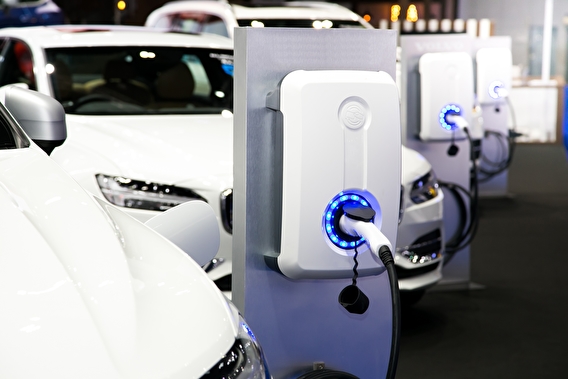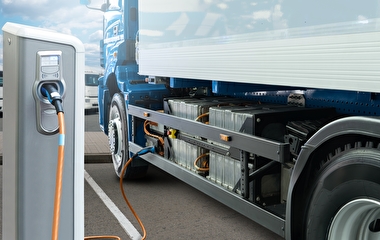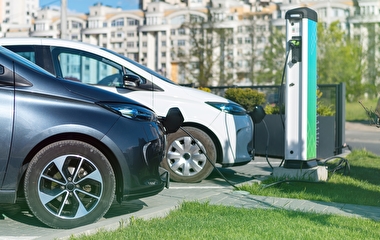
The rise of electric vehicles (EVs) has an unintended side effect: It reduces the motor fuel tax revenue needed to fund transportation infrastructure.
To help fill the growing revenue gap and ensure that all vehicle users pay for road maintenance, many states have adopted a surcharge levied on EVs and hybrids. But why do some states adopt surcharges while others do not? A project by U of M researchers explored key factors that come into play.
The EV fee is typically an annual flat fee collected in addition to the registration tax and applies to all fully electric vehicles, says Camila Fonseca-Sarmiento, director of fiscal research with the Institute for Urban and Regional Infrastructure Finance (IURIF) at the Humphrey School of Public Affairs. Some states have adopted a lower fee for hybrid vehicles.
For their study, researchers created a dataset of factors—such as transportation revenue capacity, transportation needs, environmental concerns, and political environment—from states that adopted an EV fee between 2012 and 2020. Through modeling and analysis, they then identified which factors may influence EV fee adoption.
These factors made it more likely that states would adopt EV fees:
- Higher reliance on the fuel tax
- Improved fuel efficiency
- More roadways in poor conditions
- Higher EV sales
- More nearby states with EV fees
“States that depend heavily on the fuel tax, and ones where drivers get better mileage, have bigger revenue holes to plug,” she explains. “And states with a higher percentage of roadways in poor conditions have bigger needs to fill.”
Rapid growth in EV sales can hike system costs, particularly to build out the charging infrastructure. Also, some EV models have big batteries and are heavier than their gas-powered versions, causing more pavement damage. “So, states with more EVs turn to EV fees to cover costs,” she says. A higher share of neighboring states with EV fees also correlated with higher odds of a state adopting EV fees.
These factors made it less likely that states would adopt EV fees:
- Higher growth in vehicle-miles traveled (VMT)
- Higher share of Democrats in the state’s house of representatives
“We didn’t expect the higher VMT finding,” Fonseca-Sarmiento notes. “It could be that states with higher VMT may be considering other revenue mechanisms, such as a per-mile fee, instead of EV fees.”
States with Democrats in control of the state’s legislative house were less likely to adopt EV fees, she continues. “This may be because Democrats are more likely than Republicans to support environmental policies, such as EV subsidies, and so they may be reluctant to counter that goal with surcharges.”
Similarly, states with worse air pollution were less likely to adopt EV fees. These states are more likely to promote EVs as an efficient way to address environmental conditions, she says, and therefore may be less likely to adopt EV fees.
The researchers’ paper—Explaining the Adoption of Electric Vehicle Fees across the United States—has been published in the journal Transport Policy.
The research is summarized in a research note on the Transportation Policy and Economic Competitiveness (TPEC) Program website. Others on the research team were Raihana Zeerak, IURIF researcher; Zhirong "Jerry" Zhao, IURIF founder and academic advisor; and Humphrey School doctoral student Haiyue Jiang.
Data for the analysis come from the Minnesota Transportation Finance Database, which was created by TPEC researchers and is updated regularly.
—Pam Snopl, CTS senior editor


